Giant Mao statue 'removed' from Henan village
- Published
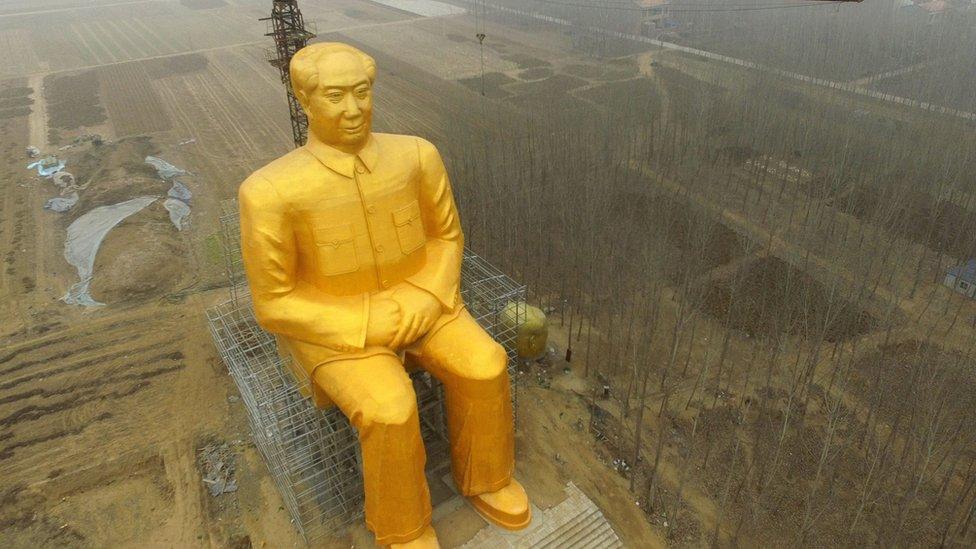
The statue sparked headlines around the world when it appeared
A 37m-high (120ft) gold-painted statue of Chairman Mao in China's countryside has been removed, just days after it was erected, state media report.
A village official told the People's Daily that construction of the Mao Zedong statue had not been approved.
The giant statue of the late communist leader, on farmland in Henan's Tongxu county, was said to have cost nearly 3 million yuan ($460,000; £313,000).
It generated headlines around the world when it was completed a few days ago.
An official at Zhushigang village, where the statue was located, said it had not been registered and approved, and had now been removed, People's Daily reported.
Land resource officials at Tongxu county also confirmed the removal of the statue to People's Daily, but said they were not clear why it was removed.
A photo circulated on social media, external, which could not be independently verified, appearing to show the Mao statue being dismantled, with the legs removed and a black cloth covering the head.
The statue was reportedly paid for by local businessmen and villagers, and was built as a homage to Chairman Mao.
However, it also generated criticism online, with some arguing that it wasted resources and was located at an inappropriate location.
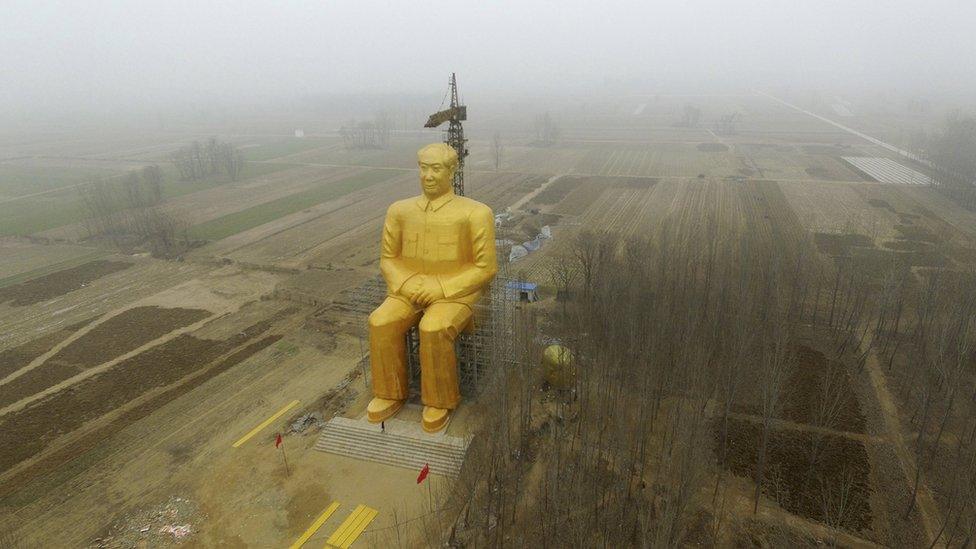
The giant statue measured 37m high
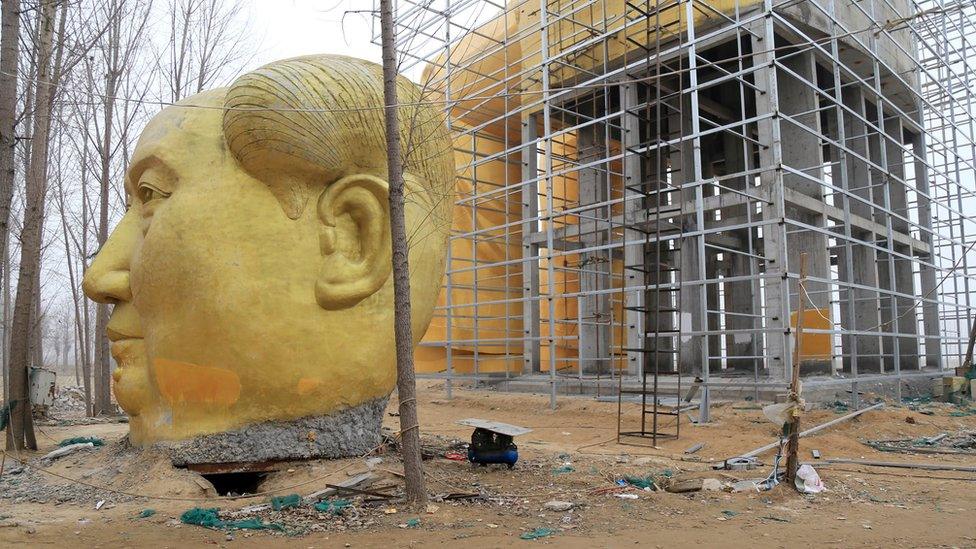
A discarded Mao head, seen beside the statue back on 4 January
Henan province was the centre of a famine in the 1950s resulting from Mao's policies.
Millions of people died in the famine, triggered by a campaign known as the Great Leap Forward.
Despite being responsible for so many deaths, Mao Zedong is revered by many in China, not least by President Xi Jinping, who praises him as a "great figure".
President Xi has also attempted to centralise power in China's presidency, and has used Mao's legacy to build support, while admitting the former leader made "mistakes".
- Published5 January 2016

- Published26 December 2013
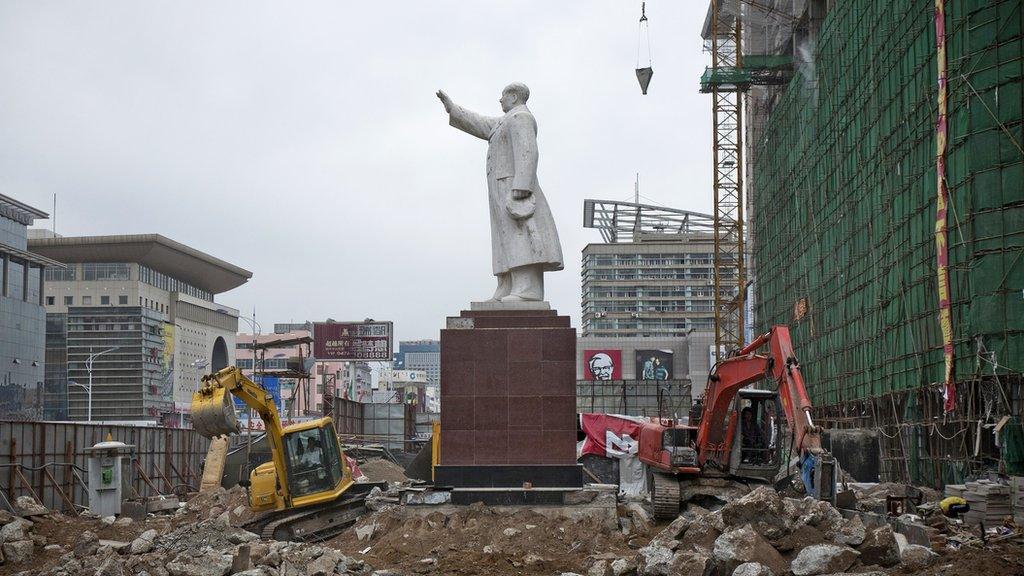
- Published15 December 2015
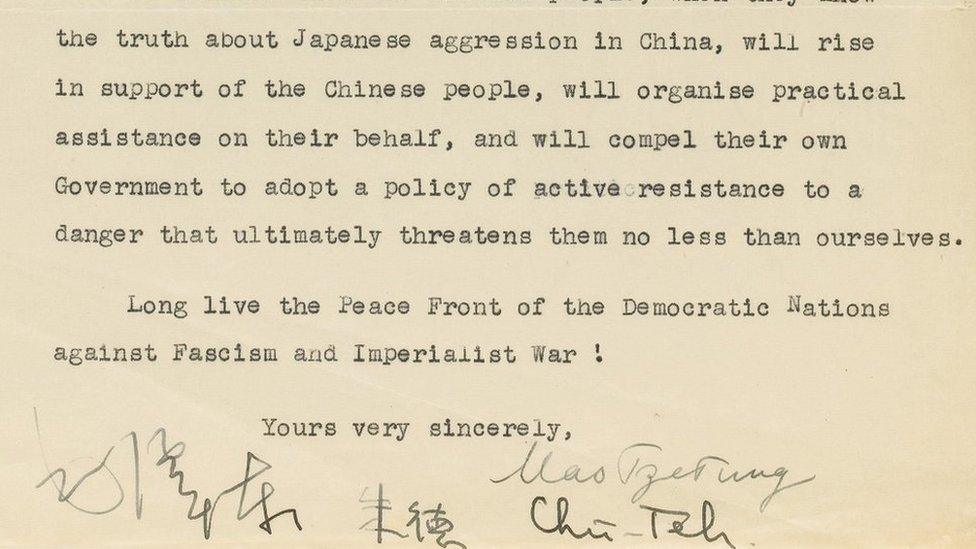
- Published10 August 2015
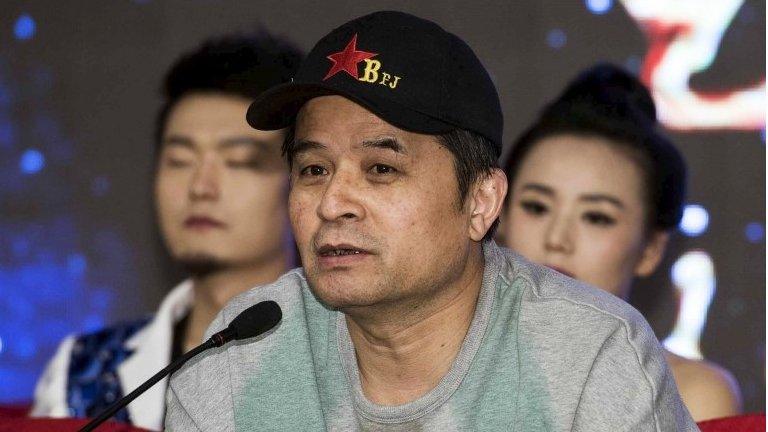
- Published24 October 2017